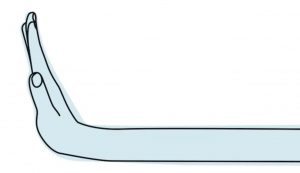The Situated Technologies project
Adam’s pamphlet was the firsts in a nine-part series that aims to explore the implications of ubiquitous computing for architecture and urbanism: How are our experience of the city and the choices we make in it affected by mobile communications, pervasive media, ambient informatics, and other “situated†technologies? How will the ability to design increasingly responsive environments alter the ways we conceive of space? What do architects need to know about urban computing, and what do technologists need to know about cities? How are these issues themselves situated within larger social, cultural, environmental, and political concerns?
Two other pamphlets have been published meanwhile:
Urban Versioning System 1.0
by Matthew Fuller and Usman Haque
What lessons can architecture learn from software development, and more specifically, from the Free, Libre, and Open Source Software (FLOSS) movement? Written in the form of a quasi-license, Urban Versioning System 1.0 posits seven constraints that, if followed, will contribute to an open source urbanism that radically challenges the conventional ways in which cities are constructed.Situated Advocacy
A special double issue featuring the essays “Community Wireless Networks as Situated Advocacy” by Laura Forlano and Dharma Dailey, and “Suspicious Images, Latent Interfaces” by Benjamin Bratton and Natalie Jeremijenko.
They are part of Situated Technologies, a project by Omar Khan, Trebor Scholz, and Mark Shepard, is a co-production of the Center for Virtual Architecture, The Institute for Distributed Creativity (iDC), and the Architectural League of New York.
The project also organised a symposium and is planning a major exhibition in September 2009.
Architecture and Situated Technologies was a 3-day symposium in October 2006 that brought together researchers and practitioners from art, architecture, technology and sociology to explore the emerging role of “situated” technologies in the design and inhabitation of the contemporary city.
Participants at the symposium featured Jonah Brucker-Cohen, Richard Coyne, Michael Fox, Karmen Franinovic, Anne Galloway, Charlie Gere, Usman Haque, Peter Hasdell, Natalie Jeremijenko, Sheila Kennedy, Eric Paulos, and Kazys Varnelis. Videos are available online.
Situated Technologies: Toward the Sentient City is a major exhibition, curated by Mark Shepard and organized by the Architectural League of New York, that will imagine alternative trajectories for how various mobile, embedded, networked, and distributed forms of media, information and communication systems might inform the architecture of urban space and/or influence our behavior within it. It will examine the broader social, cultural, environmental and political issues within which the development of urban ubiquitous/pervasive computing is itself situated.
The exhibition will combine a survey of recent work that explores a wide range of context-aware, location-based and otherwise “situated†technologies with a series of commissioned projects by multi-disciplinary teams of architects and artists, including:
- Too Smart City by Joo Youn Paek (artist and interaction designer, artist in residence, LMCC) and David Jimison (founder Mobile Technologies Group, Georgia Tech and Honorary Fellow, Eyebeam)
- BREAKOUT! Escape from the Office by Anthony Townsend (research director, Technology Horizons Program, Institute for the Future), Tony Bacigalupo (co-founder, CooperBricolage), Georgia Borden (associate director, DEGW), Dennis Crowley (founder dodgeball.com), Laura Forlano (Kauffman Fellow in Law, Information Society Project, Yale Law School), Sean Savage (co-founder, PariSoMa) and Dana Spiegel (executive director, NYCwireless)
- Natural Fuse by Haque Design + Research (led by Usman Haque)
- Trash Track by MIT’s SENSEable City Lab (led by Carlo Ratti)
- Amphibious Architecture by David Benjamin and Soo-in Yang (architects and co-directors, Living Architecture Lab, Columbia University), and Natalie Jeremijenko (artist, director, xdesign Environmental Health Clinic, New York University)
(via Fabien Girardin)





[…] unknown wrote an interesting post today onPutting people first » The Situated Technologies projectHere’s a quick excerptThey are part of Situated Technologies, a project by Omar Khan, Trebor Scholz, and Mark Shepard, is a co-production of the Center for Virtual Architecture, The Institute for Distributed Creativity (iDC), and the Architectural League of … […]